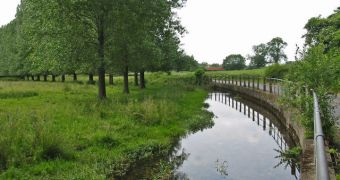Biofuels are becoming the power source of the future so scientists thinking of plant species that could be effective for future global energy demands, wondered if Poplar would make a good biofuel, and what risks would have to be assessed.
Poplar is a fast-growing tree with high yields that has the potential of becoming a biofuel, but in order to get the best out of Poplar plantations, a selection of the fittest needs to be made.
Dr Nathalie Isabel, Research Scientist, Forest and Environmental Genomics and her colleagues wondered what would happen after choosing the fittest Poplar species – the ones that would better resist diseases and have the highest yields.
They scientifically assessed the risks of the introduction of exotic species of Poplar (complex hybrids primarily made up of Populus nigra, P. trichocarpa, and P. maximowiczii), as well as their impact on native populations of Poplar species (P. deltoides and P. balsamifera) in two different places, over a three-years period.
Their research focused on gene flow, which is the passing of the genetic information – alleles, from one population to another, generated by spontaneous hybridization between exotic and native species.
After analyzing DNA signatures (called SNPs), they found out who was the father species of new individual offspring, and concluded that there were some complex patterns of hybridization happening between the two populations.
All exotic species were able to produce hybrids with native poplars, but when the native population was large, it was more successful than the exotic species, representing over 95% of the parental genes.
After the first hybridization, the genetic information could resist through generations (introgression) or be lost with time, depending “on the ability of the hybrids to become established in natural forests and to subsequently reproduce,” according to Dr Isabel.
“Thus, there is a need to monitor multiple steps of the introgression process for poplars.”
The scientists said that the hybrid allele would resist longer in small populations of native Poplars – like in disturbed agricultural landscapes, than in more densely populated areas, and this is very important for future regulatory guidelines.
This research was published in the October issue of the American Journal of Botany.

 14 DAY TRIAL //
14 DAY TRIAL //